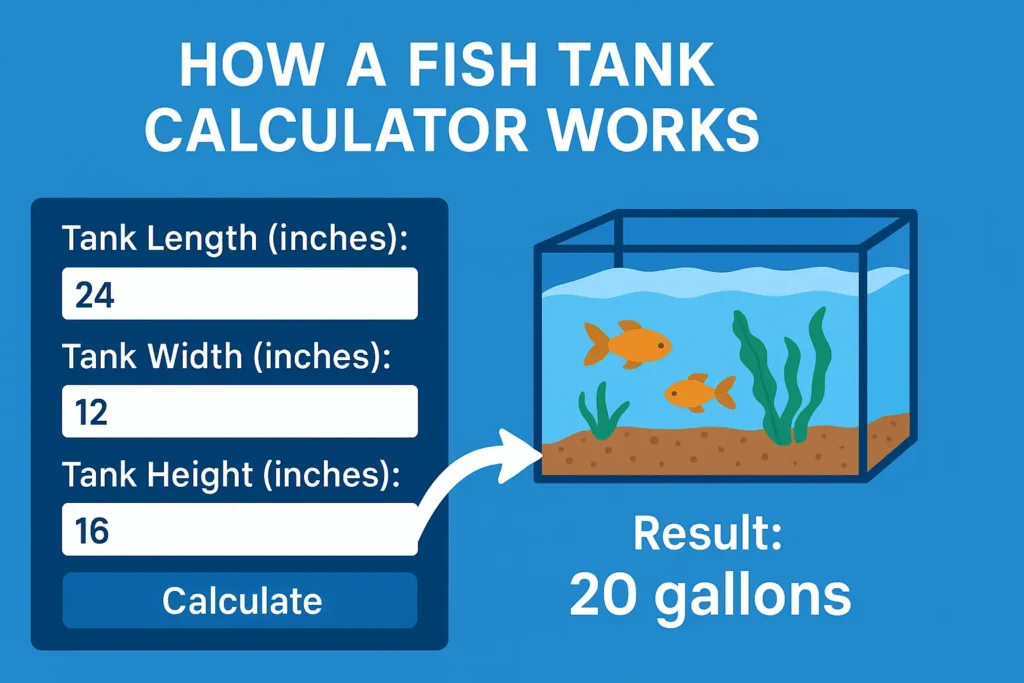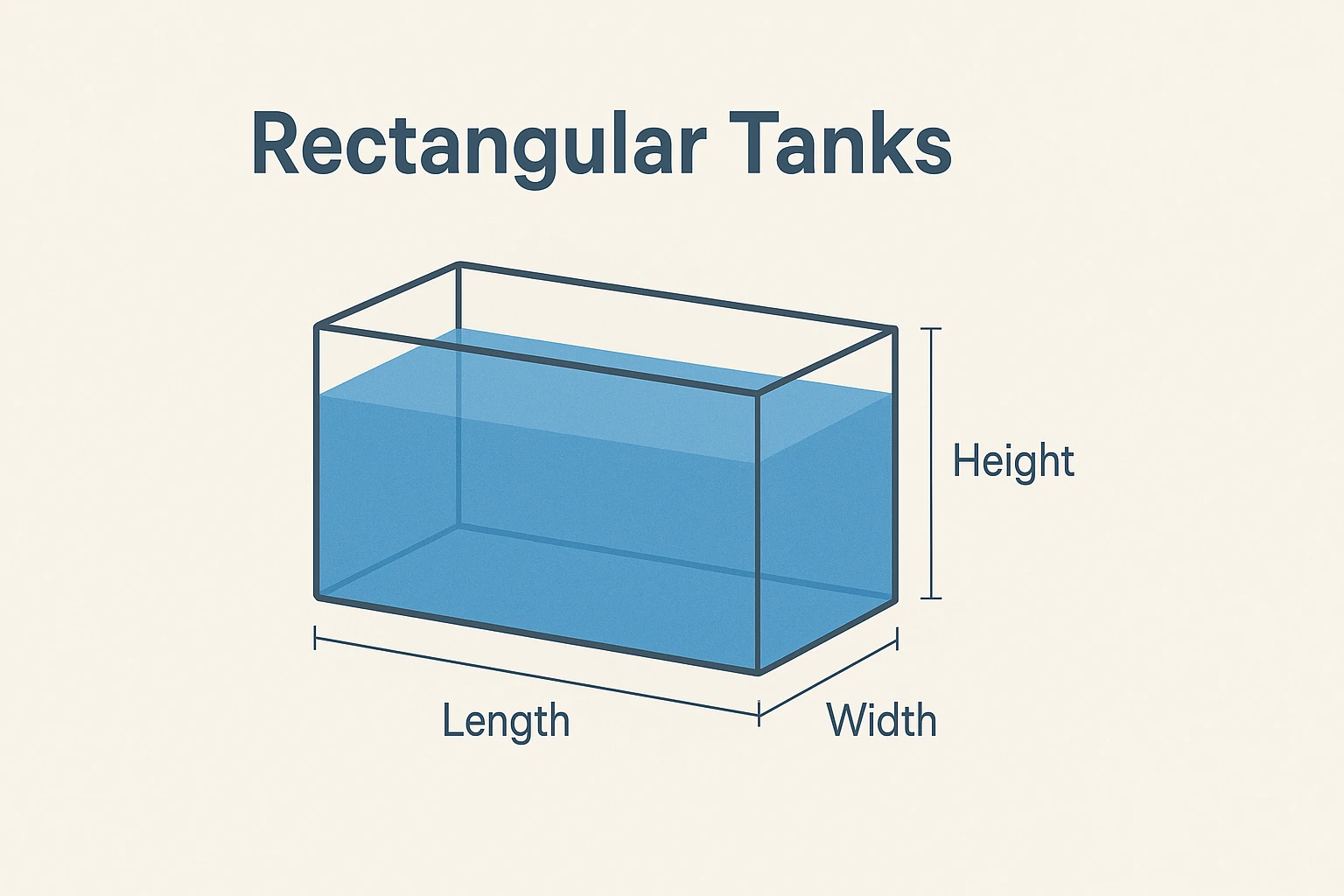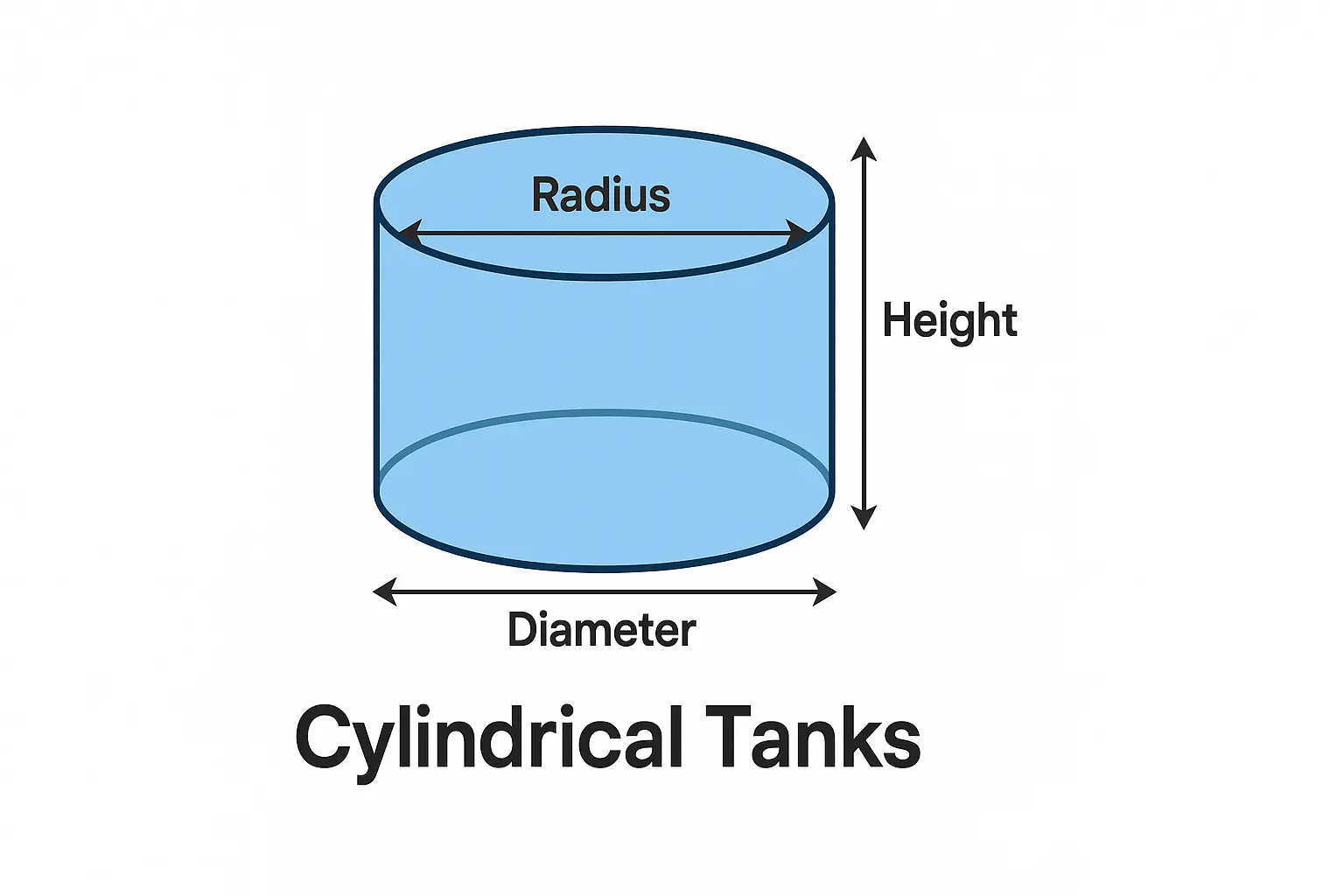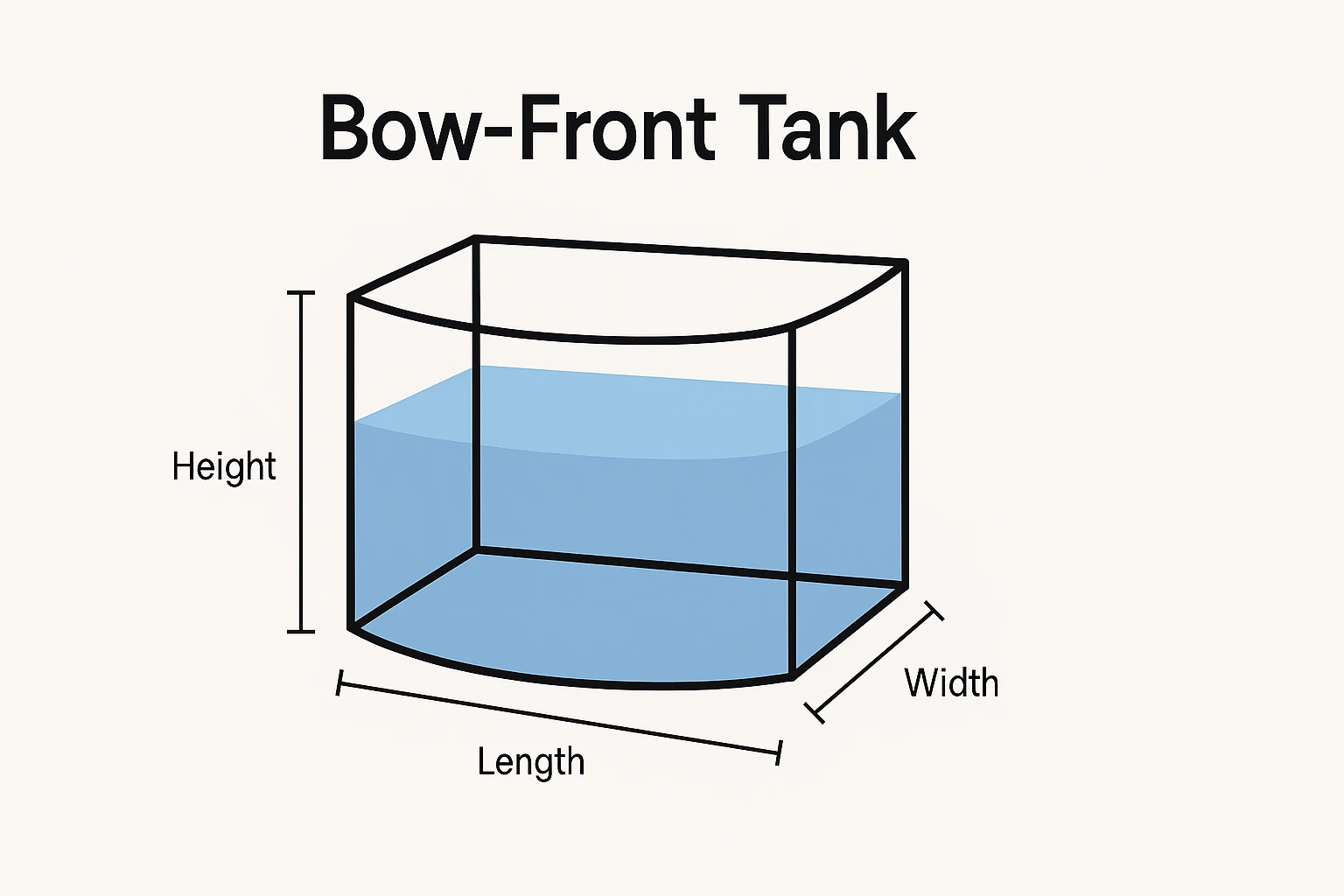🐠 Fish Tank Volume Calculator
Instantly calculate the volume of your fish tank in US gallons, UK gallons, and liters. Supports multiple shapes and units with adjustable water height.
Tank Setup
📊 Volume Summary
Enter tank dimensions and shape to see total water volume.
Fish Tank Volume Calculator

Created by James S. Lockwood
With a background in botany and ecological sciences, James specializes in creating practical tools and resources to help gardeners, farmers, and plant enthusiasts optimize their green spaces.
Getting the right volume of your fish tank seems like a straightforward task—measure the length, width, height, plug it into a fish tank volume calculator, and you’re done. Or are you?
Surprisingly, the actual water volume in a fish tank can differ from what’s printed on the box or stamped into the glass. Add in gravel, decorations, oddly shaped tanks, or even a sloping water line, and your “30-gallon aquarium” may only hold 25 gallons of usable water. That’s where using a precise fish tank volume calculator becomes more than helpful—it’s essential.

Table of Contents
How to Measure Your Aquarium Properly?
Most aquarium volume calculators assume your tank is rectangular. Start by measuring the inside dimensions—length, width, and height—from edge to edge, excluding any rims or outer frames. Always measure in inches or centimeters and convert to your preferred unit using the calculator. If you measure from the outer edges, you could overestimate by several gallons.
Some fishkeepers round up to be safe, but that’s not always wise. Over-filtering slightly might not harm your tank, but dosing medication or adding fertilizers based on the wrong volume can.
If you’re using a fish tank volume calculator, don’t forget to select whether you want US gallons, UK gallons, or liters. The difference between US and UK gallons often confuses people—it’s not just a minor conversion, it could throw off your calculations by over 20%.
Why Aquarium Volume Matters?
At first glance, volume seems like a simple metric. But it influences almost everything: filtration power, heater capacity, fish stocking levels, and how often you should do water changes. A smaller tank with lots of ornaments and substrate may look like a 20-gallon setup but might hold far less water—reducing the margin for error dramatically.
It’s often said, “The solution to pollution is dilution.” That phrase has been used in reef circles, planted tank forums, and even by pet store employees explaining why beginners should start with a larger tank. While true to a point, it’s not a free pass to overstock a tank just because your aquarium volume calculator shows you have “extra” gallons.
Fish Stocking Guide Based on Volume

The Actual Math Behind Fish Tank Calculators
For a standard rectangular tank, the formula is:
Length × Width × Height ÷ 231 = Volume in US gallons
The divisor (231) is the number of cubic inches in a US gallon. If you’re working in metric units, you’ll need to adjust the formula accordingly—or let the fish tank volume calculator handle that.
Cylindrical tanks require π (pi) and the radius squared, while bow-front tanks involve more nuanced calculations or approximations. Most people prefer using a reliable custom tank volume calculator rather than wrestling with math, and rightly so.
Stocking Your Tank: It's Not Just Inches Per Gallon
One rule suggests one inch of fish per gallon of water. But is that rule useful? Some swear by it, others call it outdated. A small, skinny fish like a neon tetra creates less waste than a chunky goldfish of the same length. And a shoal of fast swimmers needs more horizontal space, not just water volume.
A better approach is to use the calculate fish tank gallons tool to find your tank’s real capacity, then cross-reference it with care guides. Consider swimming behavior, aggression levels, filtration strength, and your own maintenance habits. What works for one aquarist won’t always work for another.
Maintaining optimal water volume isn’t just about space—it directly affects oxygen levels, waste dilution, and fish stress. The FAO’s guide on water quality in aquaculture explains how volume and quality are intertwined in both home and commercial setups.
Shapes and Their Surprises
Many beginner aquarists don’t realize just how much the tank shape affects usable water volume. A rectangular tank is straightforward, but a bow-front or corner tank can lead to wildly inaccurate guesses.
This is where a rectangular fish tank calculator or a custom tank volume calculator earns its keep. It’s not about being exact to the decimal—it’s about being close enough to make responsible decisions for your fish.
Tank Shape Volume Guide



Decor Displacement: A Hidden Volume Thief
Gravel, rocks, driftwood, and even plants displace water. If you’ve ever added a large piece of wood and watched the water level rise unexpectedly, you’ve seen it firsthand. What many calculators miss is this physical reality.
To better estimate how much usable water your tank holds, subtract 5-15% of your total depending on how heavily it’s decorated. For instance, if you’ve used our aquarium gravel calculator or aquarium sand calculator, factor in the depth and footprint to estimate the volume they displace.
And if you’re creating a planted tank setup, consider how deep your substrate is. For that, our aquarium substrate calculator can help estimate how much base material you need—while reminding you how much space it takes from your water.
Replanting and Water Loss
One often-overlooked aspect of aquarium care is replanting. Shifting aquatic plants or adding new ones can stir up substrate and lead to water loss through evaporation or disturbance. If you’re not sure how often or when to replant, this guide on aquatic plant replant timing offers helpful insight.
What to Watch Out for When Using an Aquarium Volume Calculator?
Even the most accurate aquarium size calculator isn’t foolproof. Water line height varies. Evaporation affects volume daily. And some tanks taper toward the top or include filtration compartments that reduce volume.
When in doubt, do a real-world test: fill the tank with a known volume of water using a measured container. It’s tedious but illuminating. Many aquarists are shocked to find their “40-gallon breeder” actually holds closer to 36 gallons when decorations and filters are included.
FAQs: Answering Common Volume Questions
How many gallons is my fish tank?
Use a fish tank gallon calculator with accurate dimensions. Don’t rely on model names—they can be misleading.
What’s the difference between UK and US gallons?
UK gallons are larger—1 UK gallon = 1.2 US gallons. Always verify what unit your calculator is using.
Do gravel and rocks count toward tank volume?
They displace water. If your tank looks full but the fish seem cramped, it could be the substrate taking up space.
Is it safe to use rounded dimensions?
For general use, yes. But for precise dosing or high-stakes setups like reef tanks, precision matters more.
Final Thoughts
A fish tank volume calculator is a small tool with a big impact. It helps you make smarter decisions about everything from fish care to equipment selection. But like any tool, it works best when paired with your own judgment and experience.
Whether you’re setting up your first tank or adjusting your current setup, don’t stop at volume alone. Factor in displacement, fish load, plant density, and even evaporation.
And if you’re still not sure? There’s no harm in underestimating a bit—it’s often better than pushing the limits.
Before you go, try our fish tank volume calculator and pair it with related tools like the aquarium gravel calculator, aquarium substrate calculator, and aquarium sand calculator.
Because when it comes to fishkeeping, getting the numbers right means healthier tanks—and happier fish.
Disclaimer
The Fish Tank Volume Calculator is intended for general informational and educational purposes only. While we strive to ensure accuracy, the results provided are based on user-input dimensions and simplified formulas. Actual usable water volume may vary due to tank design, substrate displacement, filtration systems, and decorations. Always verify critical measurements manually before making decisions related to stocking levels, medication dosing, or equipment purchases. We do not accept any liability for loss or damage arising from the use of this tool.
